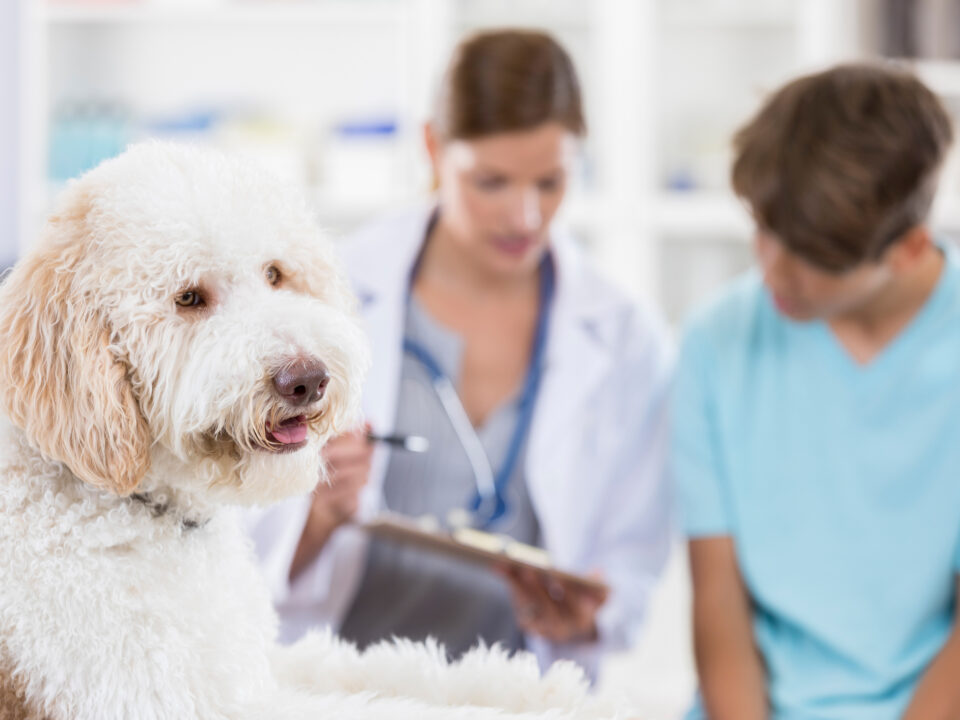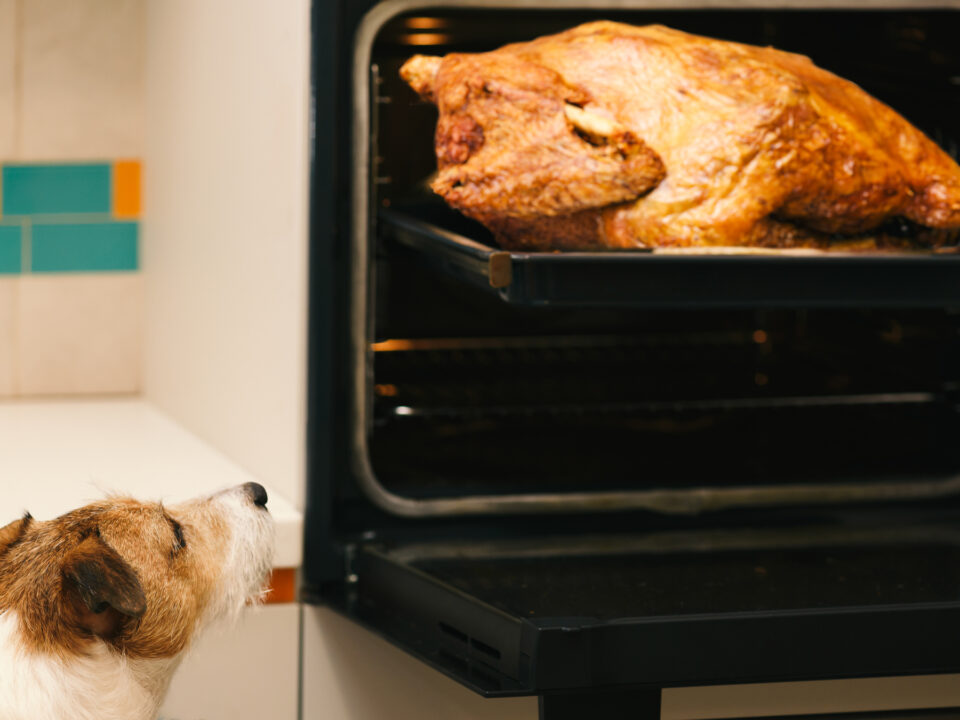Can Dogs Be Autistic? Watch for These Signs of Autism in Dogs in Sewell, NJ

My Dog Won’t Leave My Side: What Dog Owners Should Know
October 13, 2020
What to Do If Your Cat Can’t Pee in Sewell, NJ
May 18, 2021What Is Autism?
In humans, autism is defined as condition that impacts the nervous system, and symptoms and signs can vary, but range from having difficulty being in social situations, having communication issues, or exhibiting obsessive interests and repetitive behaviors.
Also, people diagnosed with autism may be incapable of processing emotions and non-verbal cues. Dogs can also exhibit similar behaviors, but in veterinary medicine, this is referred to as “canine dysfunctional behavior,” rather than autism.
Below, we’ll go over everything you need to know about autism in dogs so that you can get the help your dog needs in Sewell, NJ.
What Causes Autism in Dogs?
Autism in dogs, or canine dysfunctional behavior, is an idiopathic condition, which means that the cause is unknown. What we do know is that it’s congenital, and that dogs exhibiting dysfunctional behaviors are born with the condition. Studies suggest that dogs with canine dysfunctional behavior lack certain mirror neurons in their brains which are believed to help dogs learn social norms.
These neurons are called mirror neurons because they help young dogs “mirror” older dogs and other canines to learn how to function in a social setting. Without these neurons, a dog will be unable to develop the skills needed to build social relationships.
As autism research and education advances, veterinary professionals and dog owners are also discovering that dogs can react and experience the world in a way similar to people with autism.
In the 1960’s, veterinarians noted autism-like symptoms in dogs, and recently, in 2015, the American College of Veterinary Behaviorists (ACVB) presented a study on tail chasing behavior in Bull Terriers, and a possible link to autism. The study observed specific traits of 132 Bull Terriers, 55 of which chased their tails, and 77 (the non tail-chasing control group). Interestingly, the study found that tail chasing was more prevalent in males, was associated with occasional aggression and explosive behaviors, and sort of trance-like behaviors. Although not definitive, these results suggested that tail chasing could represent a form of autism in dogs.
How is Autism Diagnosed in My Dog?
A diagnosis of autism in a dog can be difficult because there really isn’t a lot of evidence available, but the dog should exhibit repetitive behaviors and some degree of impaired social interaction with both dogs and people. Of course other medical and behavioral conditions should be ruled out by your veterinarian before reaching this diagnosis.
Veterinarians can perform a number of behavioral tests to see how your dog responds certain situations, but these tests are not always concrete since other disorders such as canine anxiety can produce autism-like symptoms. Canine dysfunctional behavior doesn’t have a spectrum as with human autism, so veterinarians must rely on behavioral cues and compare them to what’s considered normal for dogs.
One thing to note is the fact that these symptoms appear while your dog is a puppy, and it’s an inherited disorder, and not caused by other factors such as the environment or vaccines. If you suspect that your puppy or young dog may have autism, please contact your local veterinarian.
What are the Symptoms of Canine Dysfunctional Behavior in Dogs?
Here are some of the most common symptoms of autism in dogs that your dog may be showing in Sewell, NJ.
Antisocial Behaviors
Dogs are naturally social animals that love to play with other dogs, humans, and even horses and cats. If you notice that your dog doesn’t want to interact with other dogs and animals, this might be cause for concern. Other areas of concern would be if your dog doesn’t pay attention to you on walks, or during feeding or play time. Your veterinarian can help you with any questions you may have.
Communication Issues
Most dogs easily communicate their moods and feelings, either by wagging their tails when they’re happy or as a greeting as you come through the door. When dogs are being reprimanded for inappropriate behavior, they may put their ears back, wag their tails and roll on their backs exposing their bellies.
But dogs with autism may not be able to express these moods and feelings, and their personalities may appear “flat.” In other cases, autistic dogs may enter trance-like states, staring in one direction for a long period of time, and sometimes they will avoid direct eye contact with humans and other dogs, as if they are unable to look at you in the eye.
Obsessive Compulsive Behaviors
Repetitive motions are also a characteristic of autistic behavior, and can include a wide variety of actions such as circling a room over and over again, or chronic tail-chasing or obsessive teeth grinding. Other repetitive behaviors include lining up toys or other objects, or obsessive chewing.
Inappropriate Reactions to Stimuli
Another symptom is inappropriate reactions to unfamiliar stimuli, for example, yelping or barking at the slightest touch of your hand. As with autistic children, dogs with autism feel everything differently too, and can be hyper-sensitive to any kind of stimuli, such as a gentle pet on the head, which can cause your dog to respond with a reaction of pain, aggression or fear.
Autistic dogs also over-react to sudden sounds, perhaps because they lack the ability to cope with new experiences and new things. Also, these dogs tend to avoid new environments or situations, and will often retreat to a safe space and familiar space, such as under the bed or in a closet.
As a dog owner, it’s important to keep in mind that if you do have a dog with autism, it doesn’t mean that you are doing anything wrong, but you can work with your veterinarian on methods to help minimize inappropriate reactions.
Lethargy/Tiredness
Many other symptoms listed so far can cause your dog to be tired and lethargic, and dogs with autism prefer to rest in a familiar, comfortable area instead of going outside or playing with other dogs. They may show a lack of interest in pretty much anything around them, and this symptom may be concerning especially if your dog is a high-energy breed.
Reduced Physical Activity
As mentioned above, autistic dogs prefer to avoid high-energy activities, and tend to be quite sedentary, and will avoid playing with humans and other dogs. Of course it’s recommended that if your dog is acting lethargic, to contact your veterinarian to rule out any medical issues.
Managing Autism in Dogs in Sewell, NJ
If your dog has been diagnosed with autism, you can work with your veterinarian to determine what your dog’s “triggers” are that may cause behavioral flare-ups. For example, if your dog is fearful or aggressive while walking on a leash in a crowd, try to avoid crowds, or if your dog is extremely fearful at a dog park, try to avoid crowded dog parks.
Taking a walk down a quiet hiking trail may be a better option. You can also try some techniques used with “special needs” dogs. For example, for dogs with anxiety, try commercially available wraps that provide reassuring pressure to the body, or train your dog to carry a doggy backpack filled with soft weight. These sorts of approaches have been shown to help people with autism.
How is Autism Treated in Dogs?
Diagnosis of any canine problems should first be done by a licensed veterinarian, and any medical conditions should be ruled out before looking at any underlying emotional issues. However, if your dog has been diagnosed with autism, your veterinarian may recommend some of the following treatments.
Medication
In veterinary medicine, there is no single treatment for autism in dogs, but your veterinarian may prescribe certain medications that can help curb symptoms and provide relief for compulsive behaviors. A veterinarian may prescribe Fluoxetine (Prozac) which is used to treat OCD and autism problems in people, and other medications that can help calm your dog and curb aggressive behaviors also may be recommended.
Offer a Safe, Secure Space
It’s important to offer a safe place for dogs with autism-related issues, because autistic dogs appear to be afraid of just about everything. If your dog is anxious or nervous in crowds, or around other dogs or animals, or is afraid of new, unfamiliar settings, then make sure that you can offer your dog a safe and secure place to go to, such as a dog-kennel or dog-bed.
Offer a Stress-Free Space
Avoiding situations that can stress your dog and cause anxiety is important too, and if your dog doesn’t like to be petted, respect her wishes and don’t pet her. If she doesn’t like to meet other people or dogs, let her be, and don’t force her to do things that can cause stress.
Offer Regular Exercise
Regular and consistent exercise can actually reduce anxiety and stress, and also can help keep your dog’s mind busy and add a welcome distraction from compulsive behaviors.
Offer a Well-Balanced Diet
A well-balanced diet can also help, and your veterinarian can work with you on recommended diets and feeding regimens.
Positive Reinforcement
You can also work with trainers or therapists who specialize in positive reinforcement. Look for a trainer who has experience working with dogs with behavioral issues, because a good dog trainer can be an important part of managing a dog with autistic behaviors.
Keep an Eye Out for Signs of Autism in Dogs in Sewell, NJ
If you think your dog is showing any of these signs of autism, or you’re simply unsure, you shouldn’t hesitate to contact your veterinarian so that they can give a proper diagnosis and a course of action if your dog does have autism.




